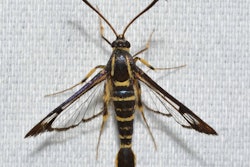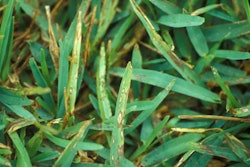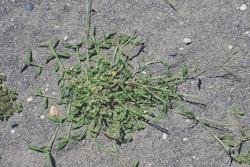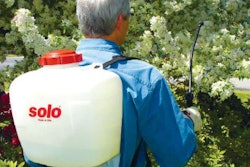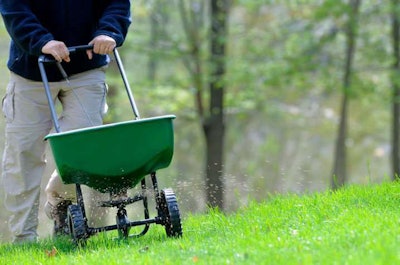
Of all the times you fertilize turf during the year, fall is the most critical. Second only to that is late-fall fertilization. I know there are some skeptics who argue spring fertilization is more important, but when you weigh the long-term benefits of late-fall fertilization, it wins every time.
Among the benefits it provides is better fall and winter color, which means your client’s turf will stay greener a little longer. Come spring, turf that was fertilized in the fall will green-up a little earlier and stay visibly greener through the summer, without the excessive growth of those lawns that were fertilized in early spring. Plus, it simply helps turf survive the winter and encourages root growth during a time when growth typically slows down dramatically.
Going on principle
The science behind how fertilizers work lends credibility to the importance of late-fall fertilization. In a research article outlining how nitrogen applications factor into overall turf performance when made during late fall, Pam Charbonneau, a turfgrass specialist at the Ontario Ministry of Agriculture Food & Rural Affairs, described the principles of late-season fertilization:
Nitrogen is taken up by the roots, even though shoot growth has ceased. This is because roots remain active at cooler temperatures.
Nitrogen increases chlorophyll content and, therefore, enhances fall color.
Increased chlorophyll content results in increased photosynthesis.
Increased photosynthesis means increased sugars. Because turf is not growing at the time of the fertilizer application, the sugars being produced are not used for growth, but, instead, are stored to enhance winter survival and spring recovery.
Late-season nitrogen promotes deep rooting during fall. Plants go into spring and summer with deeper, healthier roots.
Spring green-up is early because the nitrogen stored in the roots is there, ready to be used when shoot growth resumes.
Putting principles into practice
Timing is the most critical factor in optimizing the benefits of late-fall fertilization, and it differs depending on your region. Ultimately, you want to apply fertilizer when shoot growth slows. You should be able to recognize when this is happening based on an expanding length of time needed between mowings and a smaller amount of clippings collected. This will typically coincide with shorter days and cooler temperatures. It is essential to make the nitrogen application when turf is still green. You don’t want to wait until turf is dormant, or you’ll minimize the benefits outlined above.
Apply fertilizer too early and you run the risk of promoting turf disease because the nitrogen will force succulent growth and tissue hydration, leaving turf susceptible to snow mold and decreasing its overall tolerance to cold weather. So if average fall temperatures are holding steady at more than 55 degrees Fahrenheit, hold off on your application.
In northern regions, late-fall fertilization can take place as early as late September, but a more typical timeframe for the rest of the country is October or November (sometimes even later if you’re in a much warmer climate).
Application rate of fertilizer will vary depending on a number of factors. You’ll need to take into account the USDA Zone you’re in and the turf species, as well as rainfall and foot traffic. Density will play heavily into determining an appropriate rate of nitrogen fertilizer. For cool-season turfgrasses that are not as dense as they should be, apply more fertilizer (a pound of nitrogen per 1,000 square feet). This will help it quickly recover some density. If turf’s current density is acceptable, cut that rate, but don’t go less than 0.5 pound nitrogen per 1,000 square feet. A warm-season turfgrass, such as St. Augustine grass, will benefit from a pound of nitrogen per 1,000 square feet in late fall. For warm-season turfs, such as bermudagrass, that go dormant after the first killing frost, decrease the nitrogen application to 0.25 to 0.5 pound of nitrogen in late fall.
When choosing a fertilizer for your late-fall application, avoid products that are formulated for slow-release. Your goal is to get nitrogen to the grass quickly so that it can be available while the plant is still actively growing, so look for fast-acting soluble sources. Selecting quick-release fertilizers will insure that nitrogen will be available to turf regardless of soil temperature.


